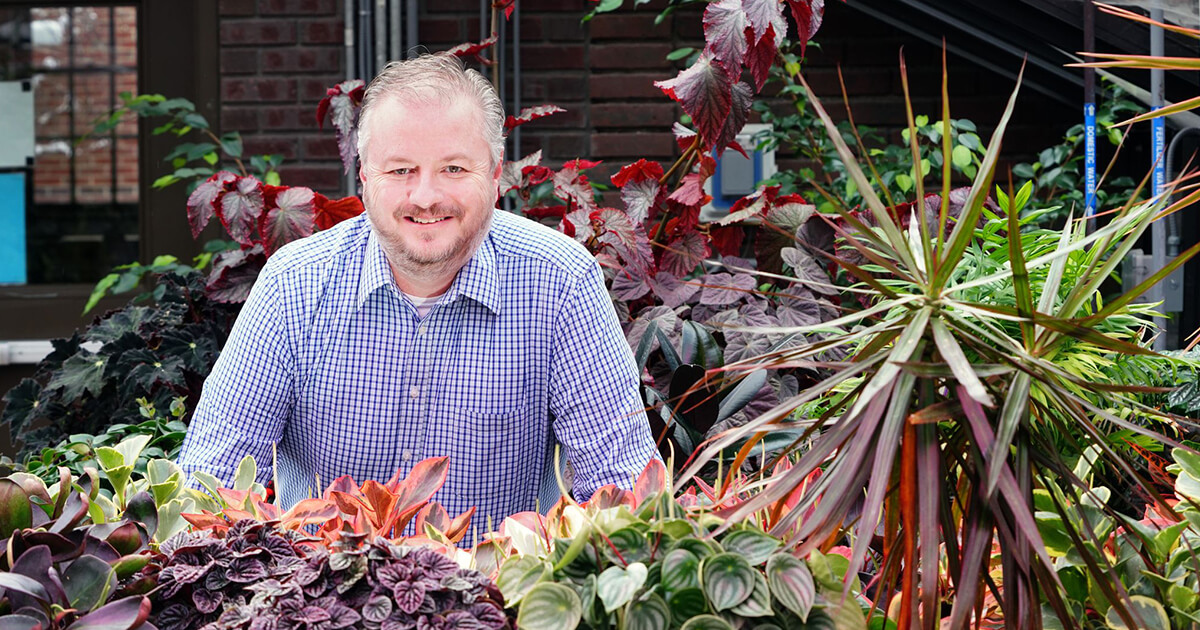Behind the Research: Kirby Kalbaugh
About the feature
Many people are involved in the remarkable range of programs, services and facilities that undergird research in the College of Agriculture. Collectively they’re integral to the college fulfilling its research mission. “Behind the Research” explores their individual roles. Each academic year, we profile six people whose work supports the College of Agriculture’s global reputation for developing innovative, multidisciplinary solutions to challenges and then putting those solutions into action.

Kirby Kalbaugh, applications and systems administrator, Department of Horticulture and Landscape Architecture
- Provides technology support on specialized projects that contribute to research, teaching and extension.
- One of the originators, in 2012, of the Purdue Arboretum project to inventory 40,000 trees on campus and build a learning platform on the data.
- Acknowledged as a co-author on academic articles published in Computers and Electronics in Agriculture and HORTSCIENCE.
Technology has long fascinated Kirby Kalbaugh, but early in his career, his goal was to manage a hotel or an amusement park. The Cincinnati native worked full time while studying hospitality management at Purdue. After earning his degree in 1998, he held various hotel management positions in Lafayette — a town he had grown to love.
Kalbaugh especially enjoyed the relationships and human interaction that his job and involvement with the Lafayette community that it provided, but he eventually tired of the demanding hours — “it’s 24/7/365,” he says — and its impact on his family life.
He had done computer consulting on the side for 20 years, since building and selling his first computer in the mid-1980s. “I loved technology, but I never thought it was the career for me because I liked being around people so much,” he explains. Then a client encouraged him to increase his workload for them while growing his own computer business, which he did until the economic downturn in 2009.
Kalbaugh says that since joining the horticulture and landscape architecture department at Purdue that same year, he has occupied one chair but changed job titles three times.
From maintaining equipment and providing desktop support, Kalbaugh’s responsibilities have become increasingly strategic. “Faculty come to me and say, ‘I have this idea. I know what I want the result to be, but I don’t know how to get there.’ That’s where I’m helpful to them — I try to bring technology to them in an impactful way.”
That might include working on new web applications or the sensors on a device for low-cost imaging analysis of plants, or using a 3D printer to help a faculty member trying to teach students to look at a 2D drawing and visualize it in 3D.
“It’s trying to keep ahead or right on the edge of what is possible technology-wise that’s impactful to our department,” Kalbaugh explains.
One unexpected benefit of his job has been his listing as co-author on several academic papers. “It’s nice to be recognized as a partner and to know you contributed meaningful parts of the project,” he says.
In addition to his departmental duties, Kalbaugh is an academic IT specialist and security officer for the college with Agriculture Information Technology. He is working on a master’s degree in IT security through Purdue University Global and expects to complete his studies next year.
Expanding his formal knowledge in the field is important, he says: “No matter what you do in IT, information security is part of everything now.” He has earned several professional certifications, including Project Management Professional.
Kalbaugh also has been a volunteer firefighter with the Buck Creek Fire Department for 13 years.
One challenge of his job at Purdue is that the demand for his expertise often exceeds the number of hours in his workday. “There are so many things where you know can make a difference, but I have to prioritize the things that are most impactful to our mission,” he says.
“My faculty are passionate about feeding the world or making the world a better place to live,” he adds. “I love supporting them in that.”





